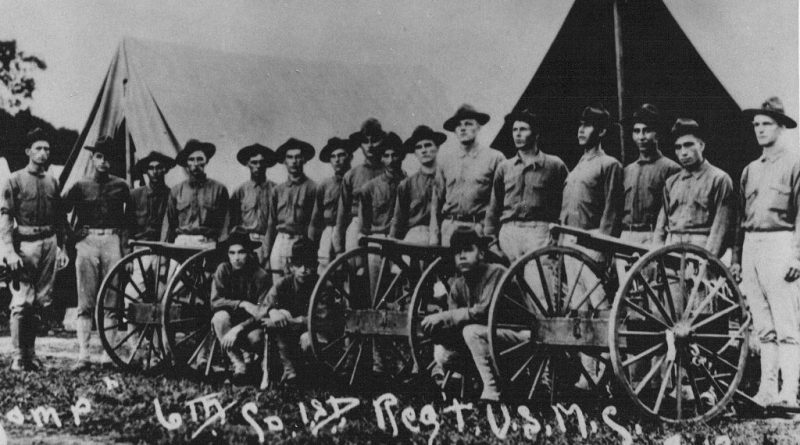July 28 in U.S. military history
1779: 40 Continental Marines and Massachusetts Militia, including their leader, Marine Capt. John Welsh, are killed in the unsuccessful assault on Britain’s Fort George at Penobscot Bay, Maine.
1914: One month after Gavrillo Princip assassinates Austria-Hungary’s heir to the throne, the Archduke Francis Ferdinand, Austria-Hungary declares war on Serbia. Within days, a peaceful European continent will be transformed into a battlefield of never-before-seen scale of carnage when Germany, France, Russia, and the United Kingdom join the conflict. Dozens of other countries mobilize troops, and in four years, some 20 million people will perish in the “Great War.”
1915 (featured image): 340 Marines and sailors land at Port au Prince, Hayti, beginning an occupation that would last until 1934.
1918: Brig. Gen. John A. Lejeune assumes command of the 2d U.S. Army Division in France – becoming the second Marine to command an Army Division (Brig. Gen. Charles A. Doyen was the first).
1932: Following an unsuccessful attempt to remove “Bonus Army” marchers from the nation’s capital by Washington, D.C. police, President Herbert Hoover orders Army Chief of Staff, Gen. Douglas A. MacArthur, to evict the protestors by force. Other notable officers participating were Majors George S. Patton (in command of tanks) and Dwight D. Eisenhower (junior aide to MacArthur).
1943: During the joint U.S. and British bombing campaign, Operation “Gomorrah”, nearly 800 Royal Air Force bombers target Hamburg, Germany in a nighttime bombing raid. The concentrated incendiary bombing combined with warm and dry weather creates a literal firestorm; a 1,000ft-tall tornado of flame driving 150-mph winds consumes everything in its path. Eight square miles of Hamburg are incinerated, along with tens of thousands of Germans.
1945: A B-25 Mitchell bomber, flying through thick fog over New York City, slams into the 79th floor of the Empire State Building, killing the plane’s three crewmembers, 11 occupants and igniting a four-story blaze.
1965: Pres. Lyndon Johnson sends 50,000 troops to Vietnam, bringing the number to 125,000. To meet the requirements, monthly draft calls are increased from 17,000 to 35,000 – the highest since the Korean War.
